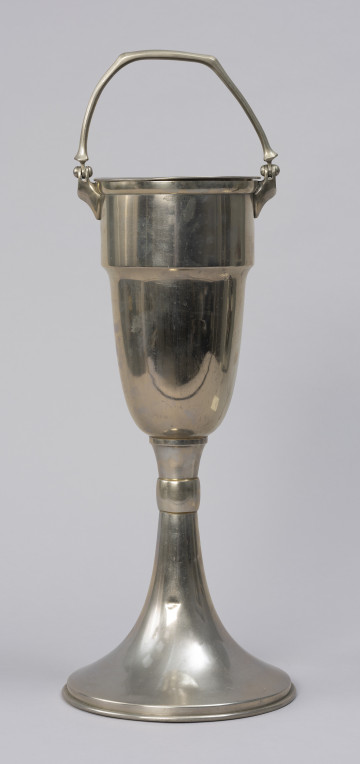
Creamer jug
1825 — 1835
National Museum in Lublin
Part of the collection: European porcelain
The Vienna manufactory was founded in 1718 by the dynamic entrepreneur Claudius du Paquier. The commercial success of Meissen porcelain led him to attempt to obtain the formula for the porcelain mass. Today we would call his actions industrial espionage combined with corruption. He spared no expense on expensive 'gifts' for the experts in Meissen and obtained the recipe for porcelain production. For the sake of high profits and fear of competition, he obtained a privilege from Emperor Charles VI that gave him the exclusive right to produce porcelain in the Austrian monarchy for twenty-five years. Despite this foresight, he ran into financial difficulties and sold the factory and its debts to Empress Maria Theresa in 1744. Thus began a period of prosperity for the factory, whose products reached a high artistic level thanks to cooperation with the professors at the Vienna Academy of Fine Arts.
The coffee pot made in 1800 bears features corresponding to the style of classicism that predominated at that time. However, the far-reaching geometrisation seems to be ahead of its time, as vessels with forms of simple geometric solids – cylinder and cone – would not become popular until the 20th century. The strictness of the geometry is balanced by the artistic ornaments of the legs, handle, and lid. The smooth surface of the body made the task easier for the painter, who made two allegorical compositions on it. One depicts a soaring eagle with the inscription 'La superiorité' (superiority, predominance). With the inscription 'La raison' (reason, sense), the other depicts a lion held on a string by a cupid flying above it. The meaning is obvious: when feelings prevail, reason loses all its power. The painter used only black, which combined with the gilded ornaments creates an elegant decoration harmonious with the austere shape of the vessel.
Barbara Czajkowska
Author / creator
Dimensions
cały obiekt: width: 21 cm
Object type
dish
Technique
gilding
Material
porcelain
Creation time / dating
Creation / finding place
Owner
The National Museum in Lublin
Identification number
Location / status

1825 — 1835
National Museum in Lublin

1913 — 1930
National Museum in Szczecin

1918 — 1939
National Museum in Szczecin
DISCOVER this TOPIC
Museum of King Jan III's Palace at Wilanów
DISCOVER this PATH
Educational path